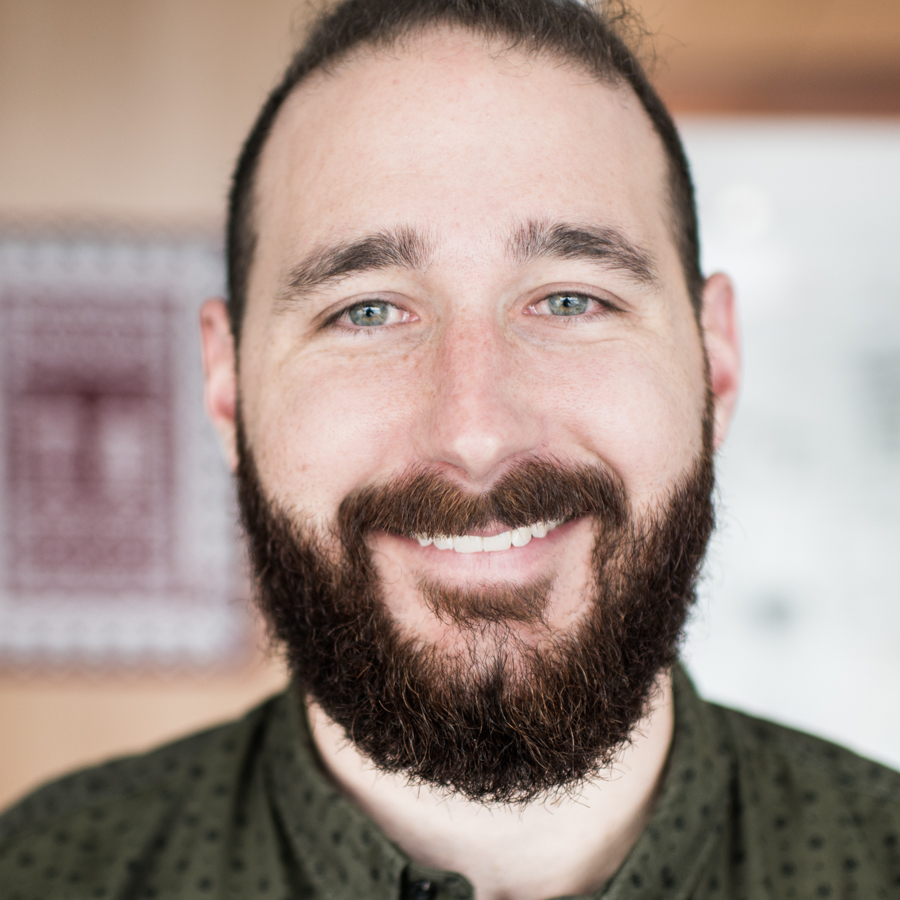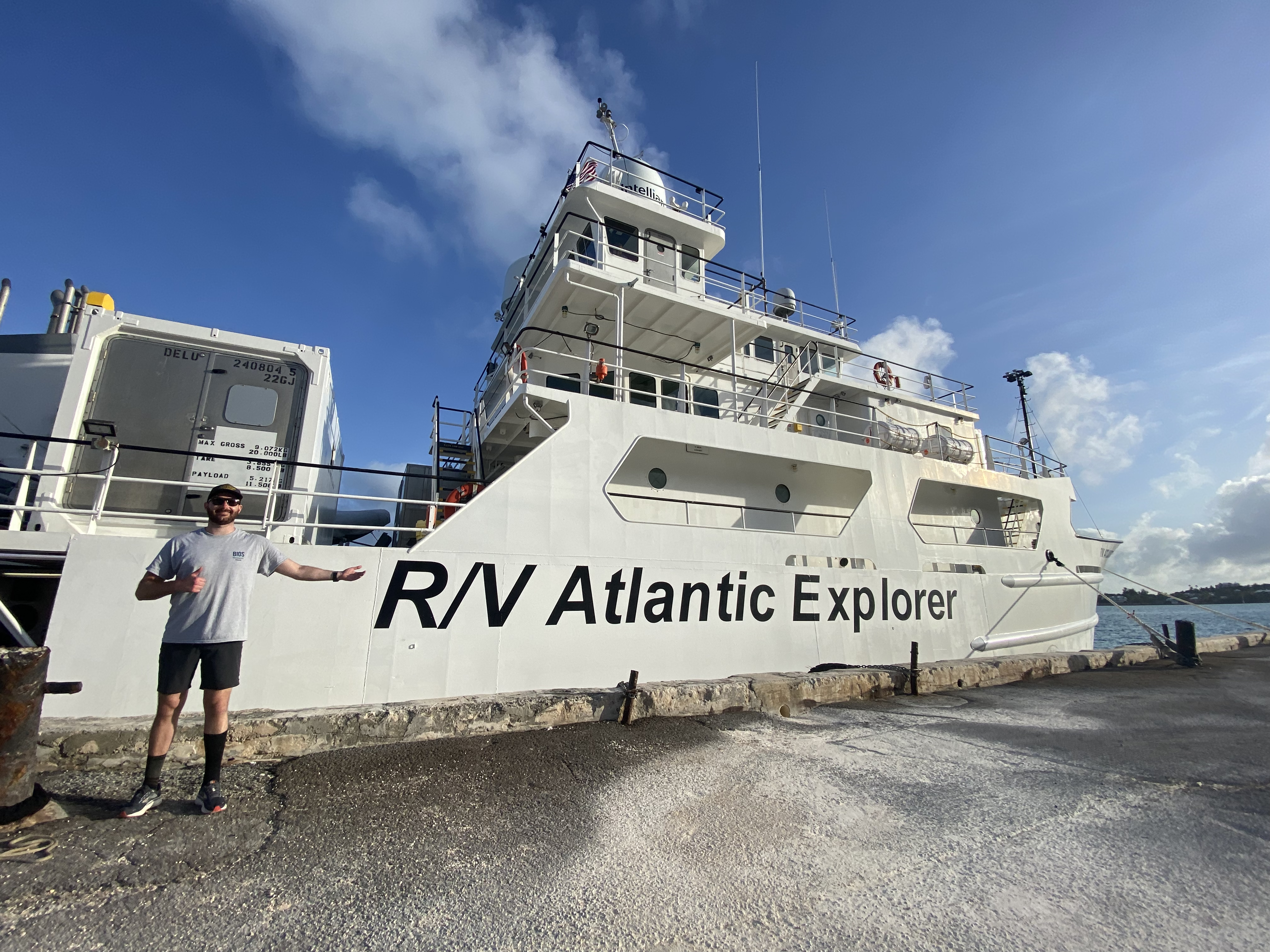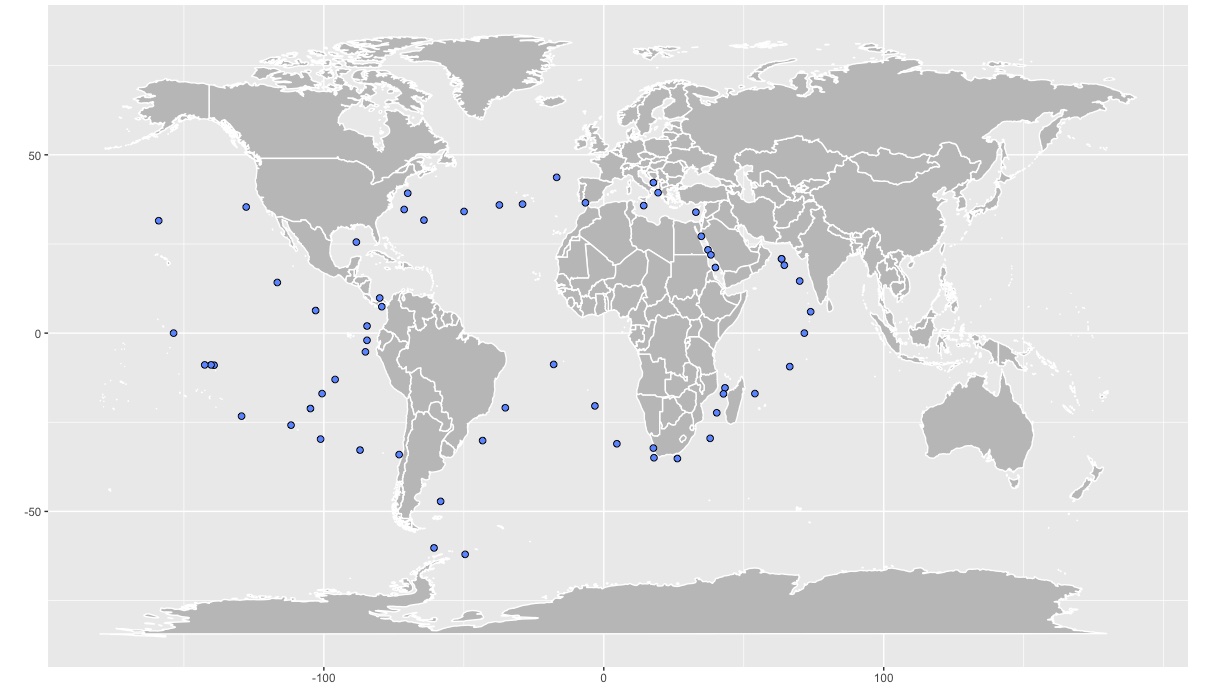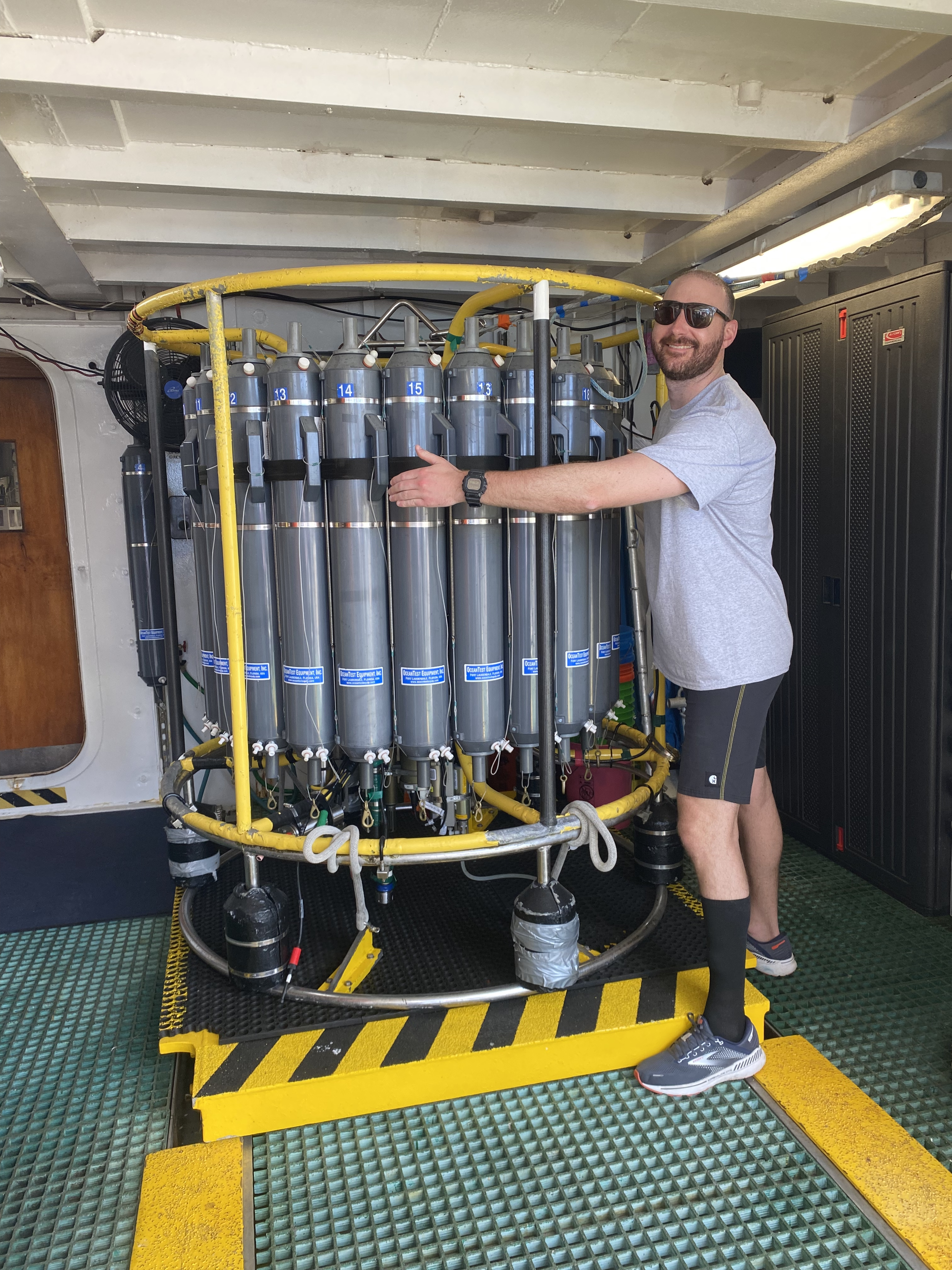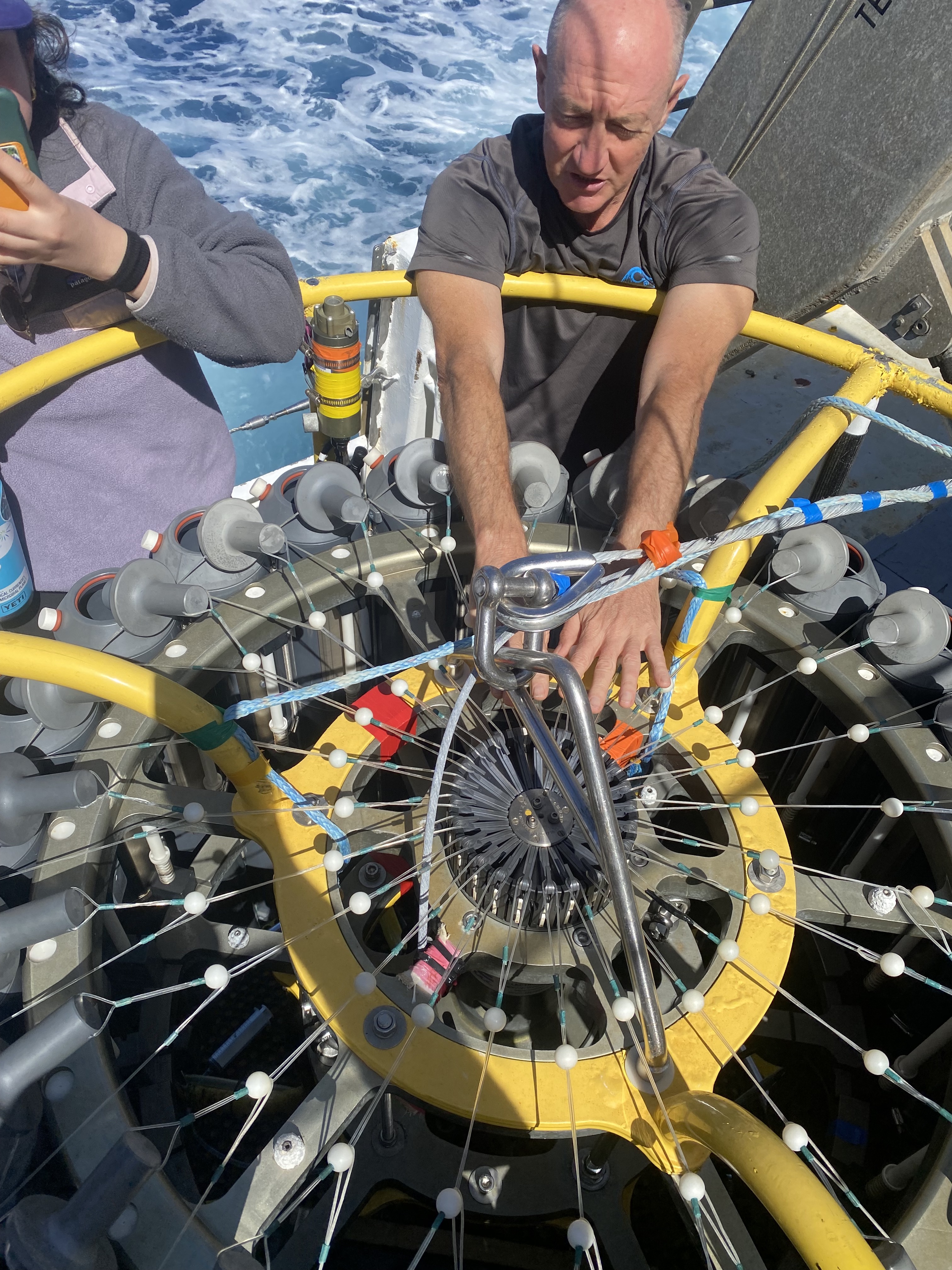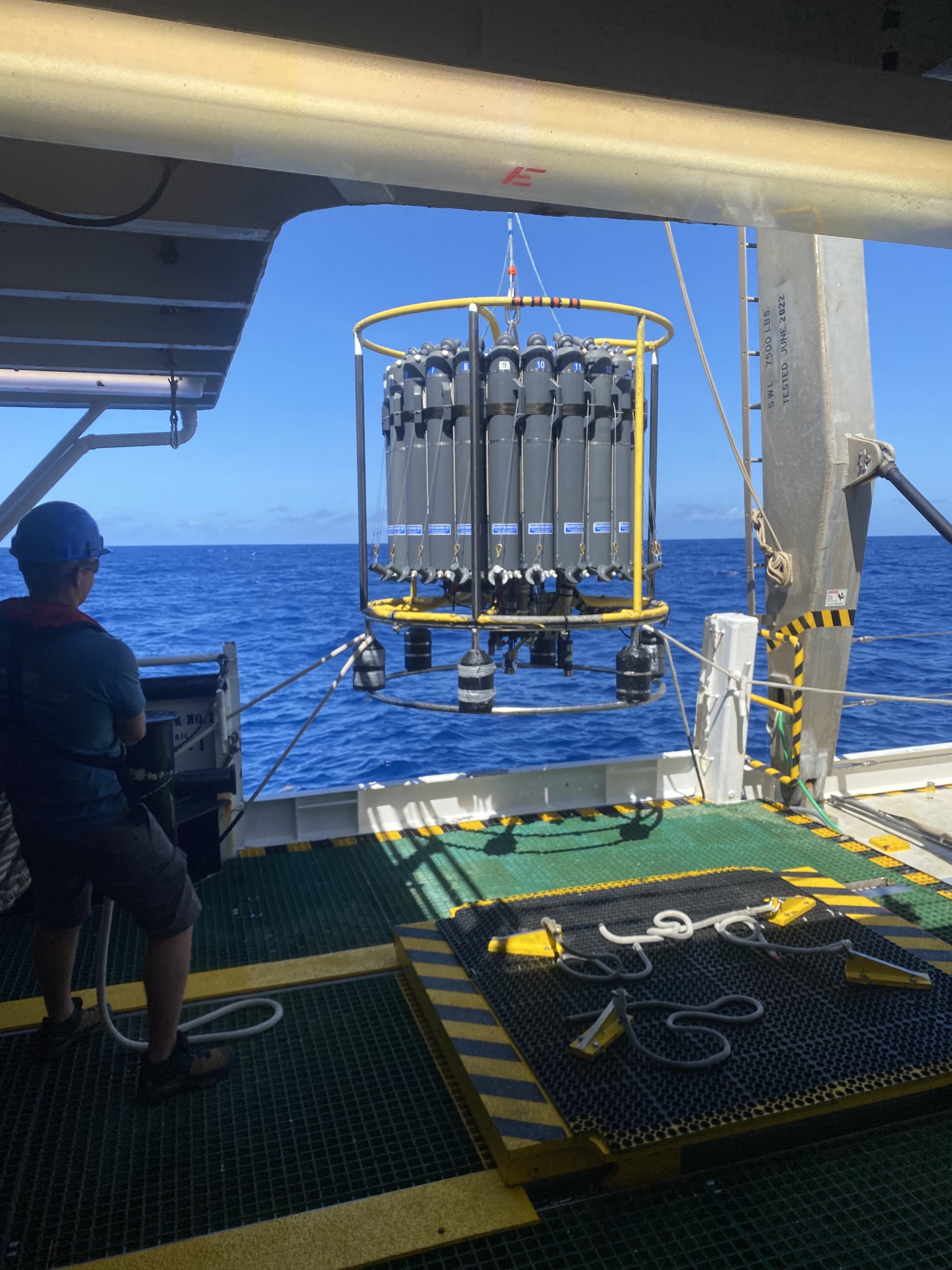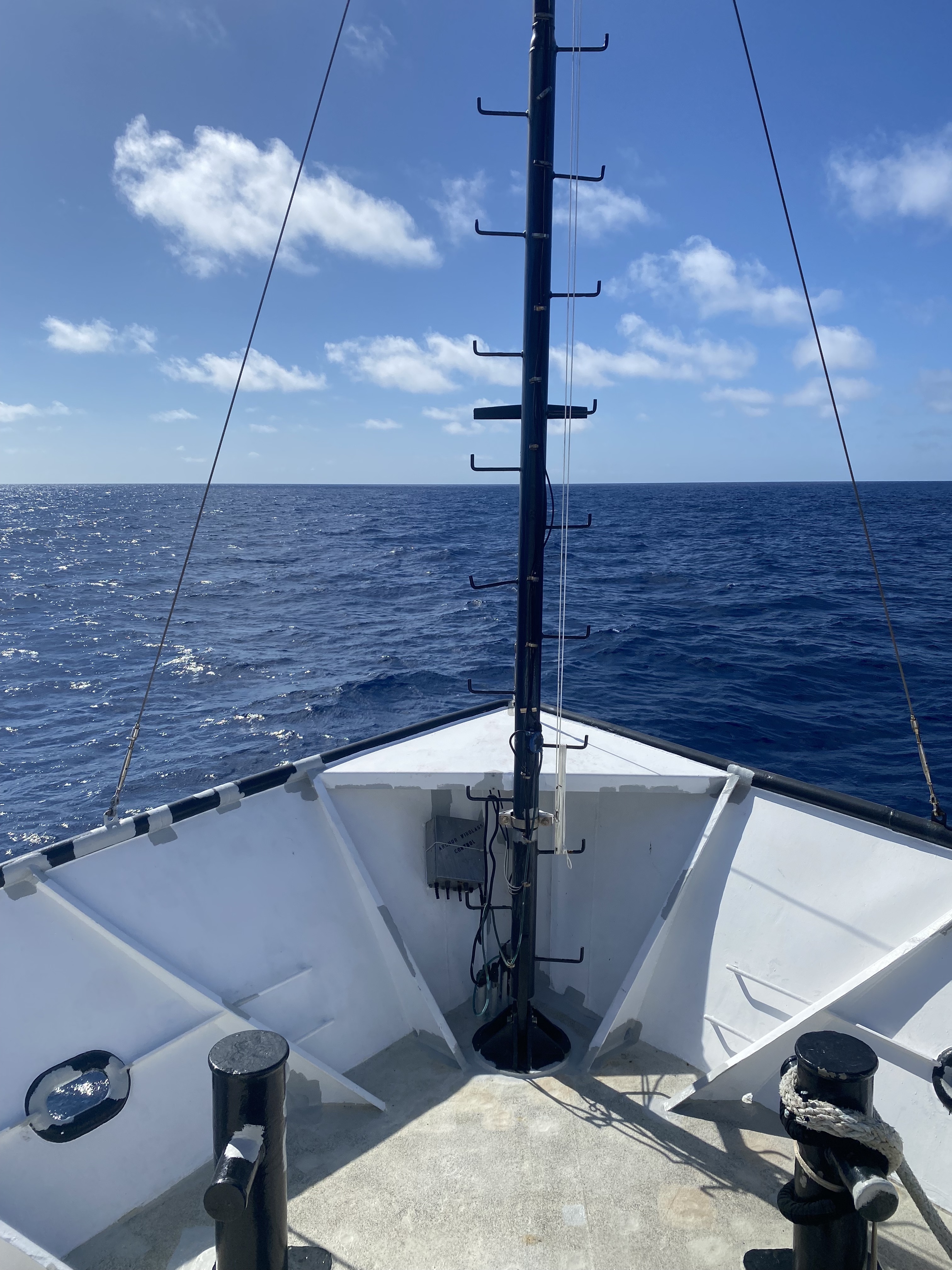Table of Contents
“Fair Winds and Following Seas” - Unknown
Elizabeth Kujawinski Ph.D., the director of C-CoMP, wished us the phrase above before our journey to the remote island of Bermuda. The origin of the saying is unknown but it is essentially a nautical phrase for good luck ⚓️!
Recently, I had the opportunity to train for a week at the Bermuda Institute for Ocean Sciences (BIOS). This trip was designed for the C-CoMP Bridge to PhD Fellowship students (see note below), however, there were a few extra spots and invitations were extended to Ph.D. students who also wanted field work experience - more on this later.
C-CoMP Bridge to PhD Fellowship If you are looking for a oceanography post-baccalaureate transition to graduate school, look no further! I highly recommend applying because you get 2 years of research sponsored in a lab, professional development, and great networking opportunities in the field. I wish had a program like this!
As a capstone week for the fellowship, students trained for a week at the BIOS and voyaged on the Atlantic Explorer research ship to take seawater samples at the Bermuda Atlantic Time Series (BATS) Hydrostation. This included a series of oceanography lectures, laboratory training, and of course cruise time!
Swimming in sea of publicly available data
Biological oceanographers study the ecology and evolution of microorganisms in the global ocean. By investigating this topic, we gain insight into topics such as: the global carbon cycle and marine food chain. Research vessels are chartered to transect the seven seas, stopping at strategic geographic points to gather water samples to study back in the lab (see the map below for an example of sample taken for the TARA Oceans project). We can’t grow the majority of these microbes in the lab, so instead, we study their DNA! To do this, we separate out the cells with filters (think like expensive coffee filters with smaller holes), preserve them in chemicals, then take these filters back to the lab to extract and sequence the DNA.
After the DNA is sequenced, scientists make their data public - this is where I come in. I leverage these datasets and study the microbial ecology of global oceans… from my laptop. In fact, I am a computational biologist and I use software to mine these massive datasets for novel insights into microbial oceanography and fundamental microbiology. Currently, I am researching which microbes we are missing from our genomic collections and providing hypotheses of where we can find novel microbes in the ocean.
Although I have been studying marine microbiology using computational methods for over 5 years, I have never been involved in collecting the data itself! By training as a “dry lab” scientist, I have found it is difficult to find opportunities to participate in field work. Luckily, when the Bridge to PhD Fellowship had extra spots I immediately made time in my schedule to attend. I think it’s important as a training scientists to get experience with all aspects of the data life cycle - this was my opportunity to get out there and get my hands wet with data acquisition.
The CTD - a butterfly net for microbes
You might be wondering why I’m giving a bundle of cylinders a big hug. Well, this is a CTD (conductivity, temperature, and depth). When armored with a rosette of Niskin bottles, it becomes a biological oceanographer’s dream because it can obtain water samples from specific depths in the open ocean. As a “dry lab” marine microbiologist, I rely on this piece of technology to give me access to the microbiomes of the surface ocean to dark depths kilometers below. I’ve been mining global ocean DNA datasets from CTDs for the past 5 years, and this was the first time I got to see one in person! This was like a chef going to France for the first time to see the origin of a cooking style.
Here is what a CTD looks like from the top. Essentially, it is a bunch of piano hammers that can be fired off at specific depths to close a subset of the bottles and capture water samples.
Another awesome aspect of CTDs is that the sensors attached to it allow one to create depth profiles of pelagic physicochemical parameters e.g. temperature, chlorophyll, oxygen. Here I am reading the depth profile and firing off one of the Niskin bottles to capture a samples from 3,000 meters below the surface. This was a wonderful experience to actually be responsible for the sample collection. When this dataset is published, I will be able to refer to a spreadsheet and point at the measurements from this sample. I was surprised at how exhilarating it was to be involved and I recommend all ocean scientists to give it a try.
An entire CTD cast descending from the oceans surface to the bottom and back again takes multiple hours. Here you can see it being brought back on board the ship! As soon as it’s recovered, we quickly began sampling the water to lower the chances of contamination. The first thing we did was measure the temperature of the water in every Niskin bottle where each temperature reading should increase from the bottom to surface samples. This acted as a quality control because sometimes the Niskin bottle seals breaks and water samples get contaminated with other depths. Next, we took water samples to measure dissolved oxygen. Oxygen concentrations were measured using a method called Winkler titration. Interestingly, this method was developed by a Romanian Ph.D. student in 1888 and is STILL used today by oceanographers, wild. Finally, we took more water samples to accurately measure salinity back at the BIOS labs.
Get out there - Data acquisition revitalized my Ph.D.
Onboard the BIOS Atlantic Explorer, I got to expand the catalog of samples from the ocean. Hopefully, with these new samples, scientists can form better models of climate change or find new microbes to study. Revitalized is an understatement for how thrilling it is to see the source of the data that has brought me so much joy during my Ph.D. A data point is just a data point until you were involved in making that piece of data for the science community to use. One aspect of dry lab work that I fell in love with is making open source software as a biproduct of my research endeavours. This made me feel I had multiple ways of impacting the science community, not just with new science insights but with tools others can use to gain their own insights. After collecting water samples in Bermuda, I realized I can also impact the science community by adding more publicly available data to the world. I highly recommend if you are a “dry lab” scientist to make an effort to get involved in data acquisition, you might even see some Humpback whales breaching!
Cheers to future voyages and thanks to the C-CoMP for the amazing opportunity!
“The world’s finest wilderness lies beneath the waves.” - Robert Wyland







